
Whether you’ve already bought a cat tree or are trying to decide whether to invest in one for your cat, you want to make sure it gets used. After all, those things can be pricey!
The good news is that most cats enjoy using a cat tree, and in most cases it’s very simple to get a cat to use a cat tree. We’ll cover reasons your cat won’t use their cat tree and how to get them settled in, step by step.
Cat trees are a great way to add enrichment to your cat's indoor environment. Place the cat tree in a busy part of the house, where cats can perch and survey their territory.
Encourage your cat to explore the tree by sprinkling it with catnip or cat treats, or even feeding your cat in the tree.
Key Takeaways
Does My Cat Need A Cat Tree?
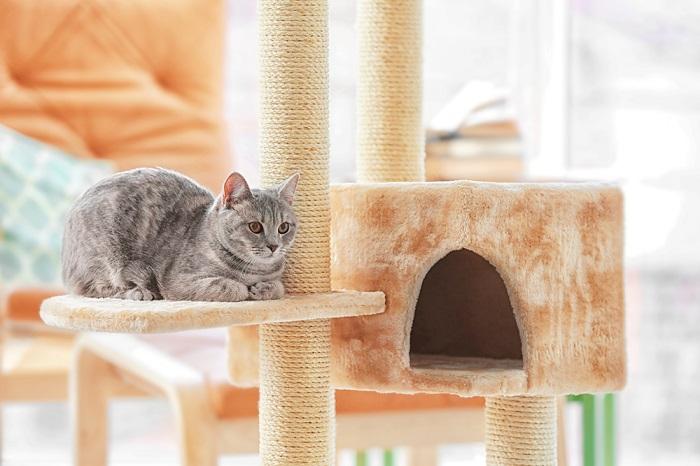
Cat trees are a great way to add enrichment to your cat’s indoor environment.
Most cats enjoy using a cat tree to climb, scratch their claws, and hide up high on the perches. They’re a climbing frame, bed, and play area all in one. In fact, large, multi-level cat trees have been shown to reduce inappropriate scratching. Although there haven’t been many scientific studies on cat trees, it’s quite likely there are several benefits to using a cat tree.
These include:
- Reduction in stress and anxiety (and associated medical problems)
- Reduction in inappropriate scratching
- Reduction in obesity
- Better claw health
In addition, pet parents might find that cats are less likely to go out and roam if more of their needs are being met indoors. Although a cat tree doesn’t guarantee your cat won’t head outside in search of a real tree, it’s a good way to let the climbers get it out of their system in a safe way.
Also Read: The 8 Best Cat Trees Of 2022
Why Won’t My Cat Use His Cat Tree?

Most cats prefer larger trees, with plenty of platforms, scratching posts and hidey holes.
If you’ve bought a cat tree and your cat is refusing to use it, you might be a bit put out, especially when you know the exercise is good for them. So, what could be wrong?
Cats can be a little finicky about their likes and dislikes, and they also form preferences at a young age. Your cat tree might be too wobbly, not tall enough, or not made of the right material.
In general, cats prefer larger trees, and they should be sturdy. There should be several platforms. Any scratching posts should be made of sisal rope (although senior cats more often prefer carpet), and at least one should be over 3 feet tall.
However, your cat’s personality and life experiences might mean they prefer something different—try a few types if you aren’t sure.
Another possibility is that you haven’t placed the tree in the right spot. Cats love to sit on the top perch of a cat tree and survey their territory, so putting it away in a small room upstairs means it’s less likely to get good use. Try moving it to a busier part of the house, or near where your cat already likes sleeping.
Depending on the tree, it might be difficult to climb if your cat has sore joints. Arthritis is very common in older cats, but it also affects younger cats. It’s certainly worth considering if your cat isn’t using their cat tree—a visit to your vet might help you pinpoint the problem.
Also Read: Why Do Cats Sit On Your Chest? 10 Reasons Why!
How Do You Get A Cat To Use A Cat Tree?
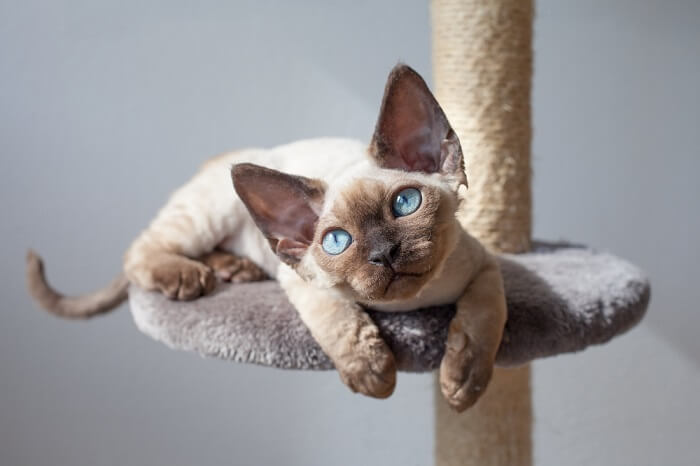
With the right encouragement, most cats eventually use cat trees.
Now we know the reasons your cat isn’t using their cat tree, let’s look at how you can get your cat interested in using their tree.
1. Choose Your Cat Tree Carefully

When it comes to cat trees, the bigger and taller it is, the better.
As we’ve said above, cats are picky at times! It’s important to choose your cat tree carefully. In general, the bigger the cat tree, the better. Try to get one that’s at least three feet in height and has at least two levels.
Also Read: Understanding Your Cat’s Five Senses
2. Swap Scents
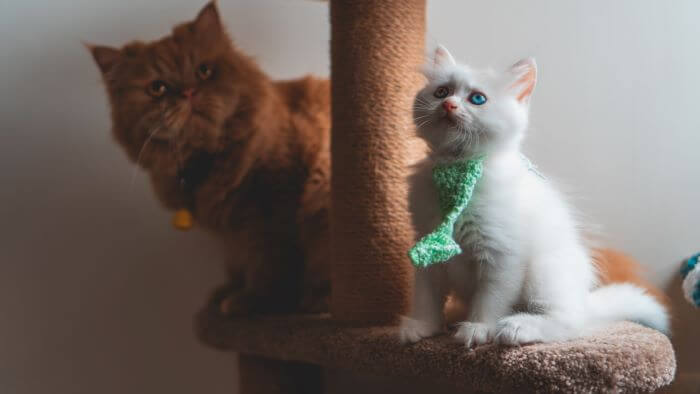
Cats are scent-motivated; placing an object that contains your cat’s own scent might entice them to the tree.
If your cat has a favorite blanket or bed, try placing it on the cat tree so it smells familiar to them. You could also put a blanket or towel wherever they usually lie so it becomes part of their ‘bed’, then move it onto the cat tree to help cement the idea of it being a bed.
Also Read: Do Cats Have Scent Glands In Their Paws?
3. Place The Cat Tree Near Where Your Cat Currently Sleeps
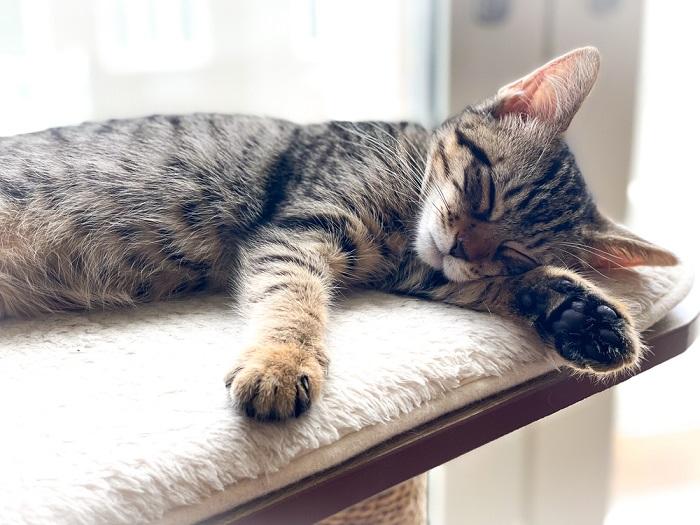
Cat tree placement is important—chose an area where your cat likes to hang out.
If your cat has a favorite sleeping spot, putting the cat tree nearby might help them decide to use it. Your cat likely sleeps there because it feels safe. It might have a good view of the garden or be close to an escape route.
Either way, they’ve chosen that spot for a reason, so it’s usually better to give in and give them the cat tree nearby if possible. As mentioned above, placing the tree out of the way upstairs is unlikely to be a good place—try it in a room where your cat spends a lot of their time.
Also Read: Why Does My Cat Lay And Sleep Between My Legs?
4. Use Catnip To Encourage Your Cat
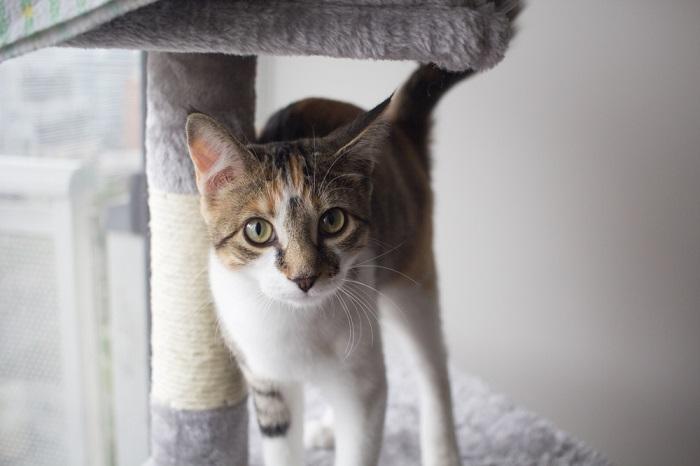
Catnip stimulates cats to to play, roll, and scratch, so it might help them explore the tree.
You can use a little catnip to help your cat relax and enjoy the tree. Try sprinkling some on the levels. Or, if your cat tree has scratching posts, you can use a little sprinkled around the base. Catnip often sends cats into a “frenzy” state, which causes them to play, roll, and scratch— perfect for a new cat tree!
Also Read: What Does Catnip Do To Cats & Why Cats Like It?
5. Tempt Your Cat With Food
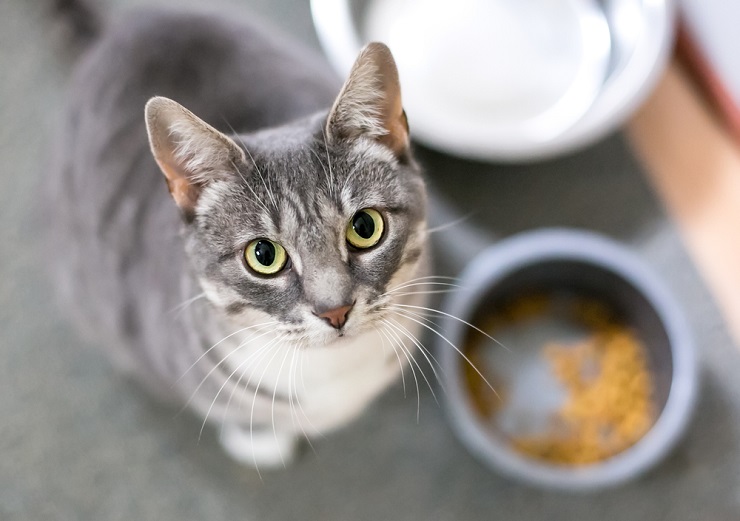
Feeding your cat some treats or even meals could create positive associations with the cat tree.
Not all cats respond to catnip, but most cats love a treat or two. You can offer your cat a treat or even his usual dinner on the top of his cat tree. To help him explore, try putting a treat on each level.
Also Read: The 12 Best Cat Treats
6. Start To Make It Part Of Your Play Routine

There are so many benefits to having a safe, high place to call their own that your cat will thank you for trying these steps.
If your cat avoids a new cat tree, making it fun can be a game-changer. When you’re playing with a favorite toy, occasionally play near or on the tree. Start small (just moving the toy over the base) and build up to lifting the toy in the air above your cat’s head.
Also Read: How To Safely Play With A Cat, According To A Cat Behaviorist
Tips For Getting A Senior Cat To Use A Cat Tree
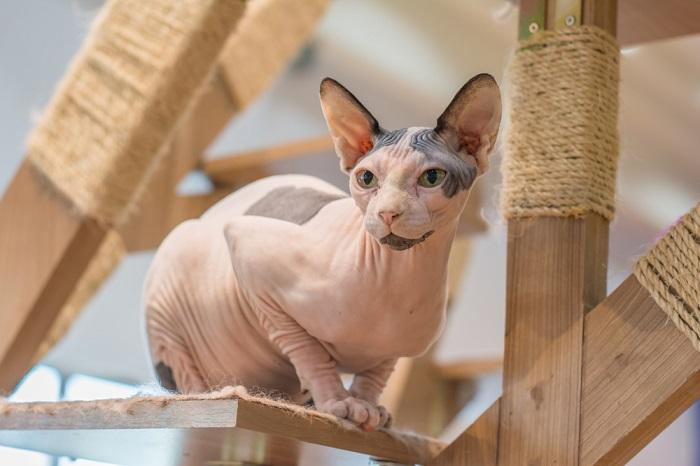
Senior cats might take a little more time to warm up to a cat tree.
Most young cats are natural climbers and are likely to explore anything new you offer. But older cats are often more reluctant to change.
Here are some tips specifically for older cats:
- Get them checked for arthritis
- Get a cat tree with plenty of ramps
- Put the cat tree in such a way that other furniture can help with access
Also Read: 8 Purrfect Games You Can Play With Your Cat
Final Thoughts

It can be hard to get a cat to use a cat tree, but it’s well worth it. There are so many benefits to having a safe, high place to call their own that your cat will thank you for trying these steps. Hopefully, your finicky feline will soon come to enjoy their new cat tree. The next thing you know, they’ll be surveying their territory from the top perch.
Also Read: How Do Cats Mark Their Territory?
Frequently Asked Questions
How can I improve my cat tree?
Cats tend to like large cat trees with multiple platforms. However, it’s best not to alter a store-bought cat tree, as it might not be safe. Instead, consider finding instructions for a DIY cat tree that includes hammocks, perches, ladders, and a variety of scratching posts.
Why does my cat not climb?
Not all cats climb, but most do. If yours is reluctant to climb, it would be a good idea to schedule a visit with your veterinarian, as it’s possible they’re too uncomfortable to climb. Arthritis is common and painful, and can be a cause of cats not wanting to climb.
Will my cat actually use a cat tree?
Most cats enjoy a cat tree, and it has several benefits. To maximize the chances of your cat using a cat tree, choose a large one with multiple levels and make sure it’s stable.
What do I do if my cat doesn't like the cat tree?
Cats are always suspicious of new things—it’s how they stay safe in the wild. If your cat doesn’t immediately warm to your cat tree don’t panic, give them time and follow our six steps for getting a cat to use a cat tree.







